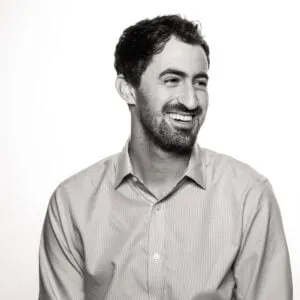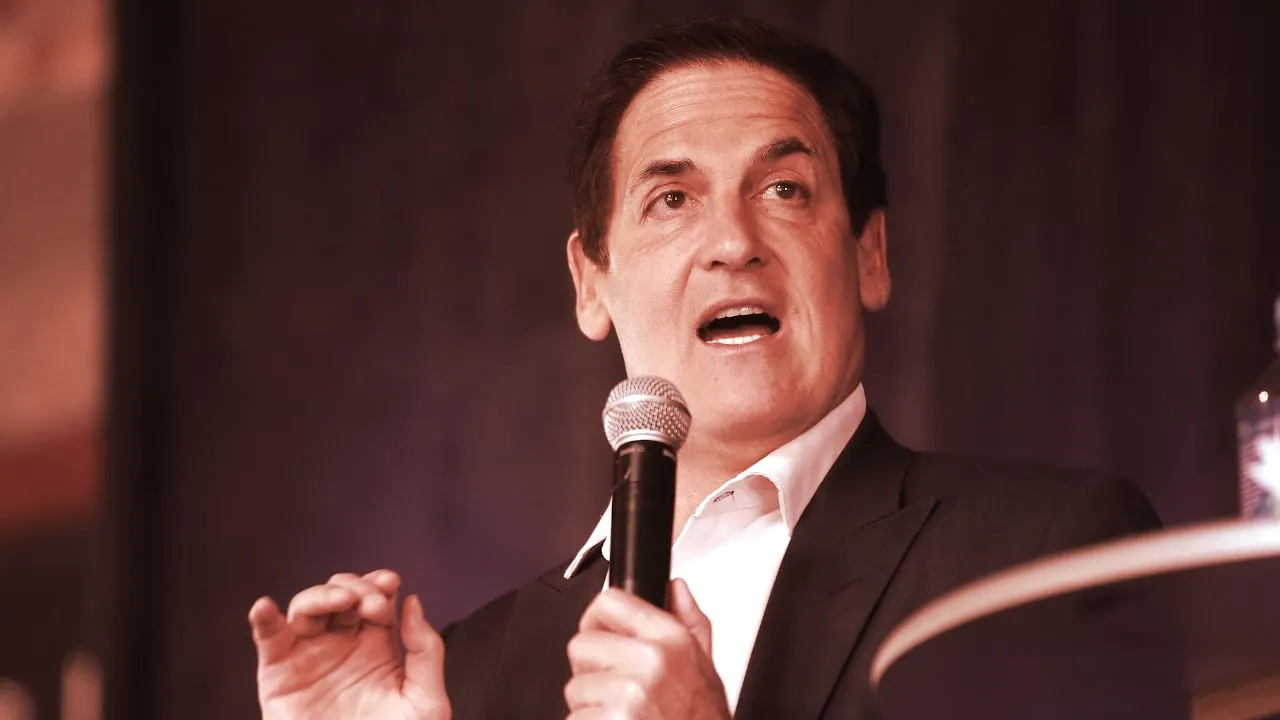In brief
- Billionaire NBA team owner Mark Cuban can't get enough of NFT collecting lately.
- He told Decrypt the key to understanding the NFT craze is to "get over that perception that I have to physically be able to touch it."
Dallas Mavericks owner and ABC "Shark Tank" investor Mark Cuban had never tweeted the term "NFT" until Jan. 27 of this year. But since then, he has tweeted out a cascade of links to his own NFTs or non-fungible tokens, blockchain-based collectibles that have exploded in popularity (and price) across sports, music, and art.
Cuban has gone gaga for this stuff: he's promoted NFTs on NBA Top Shot, Rarible, Mintable, and OpenSea, different platforms for buying, trading, and sharing your NFTs.
It's a difficult phenomenon to wrap your head around.
Cuban, in an extensive interview this week with Decrypt, explains it by holding up his own favorite basketball card: John Brisker, who played in the 1970s for Cuban's hometown Pittsburgh Condors in the ABA before leaving the league to become a mercenary in Uganda, where he disappeared in 1978. ("Cool as hell story," Cuban says.)
The fun of owning the card is "just the joy of ownership," Cuban says. "I don't take it out and look at it all the time. The picture of John Brisker, you can find that online somewhere, there's nothing unique, and it's not like the picture is artwork, and there's nothing special about the stats and the commentary on the back. All that is available online. It's the ownership that comes with it. And by physically having it, that's your only proof of ownership."
The 'joy of ownership'
If Cuban wanted to sell the card, he says, he'd have to start an intensive process: get it validated, graded and priced by a professional, wrap it up, ship it to the buyer, then receive his payment.
Enter NBA Top Shot, the marketplace on which fans and collectors buy digital video clips of, say, a LeBron James dunk, and can share them, hold them, or sell them. In the past 30 days, it's done nearly $300 million in volume. On a particular frenzied day in February, the platform sold through $2.6 million of NFTs in 30 minutes. Collectors are paying hundreds of thousands of dollars, in some cases, for a digital video clip of a play you can also watch on Twitter, Instagram, or YouTube.
You have to "get over that perception that I have to physically be able to touch it," Cuban says, "and realize that's more hassle, the joy of ownership is really what matters. You get all the benefits of the joy of ownership... all the value creation—or loss, for that matter—the friction-free trading and transacting, the ability to pay royalties to the original creator after every sale, which is enormous, and really enables more creativity to come to the marketplace. Whoever designed [the card of] good old John Brisker and took his picture is not getting any value whatsoever."
Getting over the feeling of wanting to physically hold the art you've bought is easier said than done, though anyone who believes in Bitcoin as an investment has at least partially already come around to the idea of the Internet of Value.
And even if you buy Cuban's pitch for NFTs, the tech can be intimidating. NBA Top Shot is on Flow, a faster blockchain than Ethereum, and allows buyers to pay in dollars, so they don't necessarily have to deal with crypto or even think about crypto. (Top Shot has another thorny issue at the moment: buyers have complained that it's difficult to take your money off the platform.)
But Cuban's claim about the possibilities for paying royalties to the original owner is the part that has caught on with artists. The fact that Kings of Leon turned their new album into three varieties of NFT might arguably suggests there's something permanent here.
I dont think that people realize that the real growth in NFTs isn't now. Art, Music, Photos, Short Videos are the proof of concept and just the beginning. The real growth comes when corporate IP goes @Ip2Nft. That changes revenue streams for ALL companies, large and small
— Mark Cuban (@mcuban) February 23, 2021
'Not as private as people think'
There's another wrinkle with NFT ownership. When you publicly share a link to your NFT wallet on a platform like Rarible, anyone with a base-level understanding of blockchain can view the wallet address on Etherscan (a public site for viewing the Ethereum blockchain) and see the monetary contents of your wallet. (The Bitcoin blockchain is the same way: billed as anonymous, but really more like semi-anonymous.)
Cuban happily tweets out his Rarible wallet, and as of Friday afternoon that wallet contains $455,000 worth of tokens and NFTs.
Cuban knows everyone can see that, and he doesn't care. (He also hints: "I got a lot of wallets. I got a lot of wallets.") But does a celebrity like Lindsay Lohan, who also tweeted out her Rarible address, realize that? (Hers now has only $440.)
"Yeah, it's not as private as people think," Cuban acknowledges, with a laugh. "And that's the whole point of the blockchain, right? That it's 100% public because it's all verifiable. But of course, I could just take it all out and put it in another wallet... And for me, 99% of what I'm doing right now is just learning. Learning how pricing mechanisms work, learning how the transfer technology works, learning how to mint, learning how to post, all this stuff is part of a learning curve. Because it does need to get simpler. It does need to be easier, so that, celeb or not, anybody can do it."

